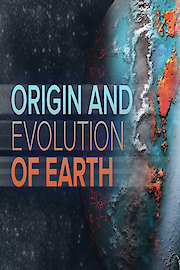















































In 48 lectures by Professor Robert M. Hazen, the noted scientist who pioneered the study of mineral evolution, you follow events from the big bang to the formation of Earth to the many twists and turns in our planet's evolution. In a course suitable for scientists and nonscientists alike, Professor Hazen recounts Earth's story through the unique lens of mineral evolution.
The Origin and Evolution of Earth: From the Big Bang to the Future of Human Existence is a series that ran for 1 seasons (47 episodes) between October 17, 2024 and on The Great Courses
-
Channel
-
Premiere DateOctober 17, 2024

-
 MyFreeDIRECTV is a new free premium TV experience.
MyFreeDIRECTV is a new free premium TV experience.
-
 Enjoy a curated selection of popular free live channels and On Demand library.
Enjoy a curated selection of popular free live channels and On Demand library.
-
 Try the DIRECTV experience - All you need is the DIRECTV app.
Try the DIRECTV experience - All you need is the DIRECTV app.

 MyFreeDIRECTV is a new free premium TV experience.
MyFreeDIRECTV is a new free premium TV experience.
 Enjoy a curated selection of popular free live channels and On Demand library.
Enjoy a curated selection of popular free live channels and On Demand library.
 Try the DIRECTV experience - All you need is the DIRECTV app.
Try the DIRECTV experience - All you need is the DIRECTV app.
































